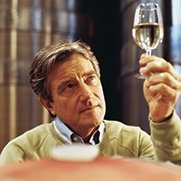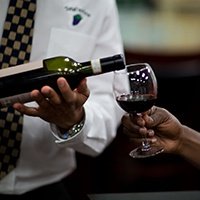What’s a Super Tuscan wine? Simply put, it’s a red wine made in Tuscany that veers from the centuries-old prescriptions for local wines, and is made with international grape varieties instead of, or in addition to, the indigenous Sangiovese. These wines, typically powerful blends including Cabernet Sauvignon, Merlot or Syrah, also mellow a bit in small oak barrels instead of large vats – another deviation from the age-old recipe.
The Super Tuscan movement began in the post-World War II era when the Marchese Mario Incisa della Rocchetta first planted Bordeaux varietals at his estate in Bolgheri. Sassicaia, the wine he produced – a blend of Cabernet with a bit of Cabernet Franc, aged in oak – was first released commercially in 1968. In 1975, winemakers at Antinori released Tignanello, a blend of Sangiovese and Cabernet.
The wines were powerful and unique, and they caused a sensation. But because they did not meet the requirements for the region’s traditional quality classifications, the Super Tuscans took the ignominious Vino da Tavola label (and later, as the system was modified, IGT Toscana). Ironically, the wines’ high-profile exclusion from DOC status helped create more interest. Tignanello and Sassicaia almost immediately became the most sought-after and expensive wines of Tuscany, and other winemakers rushed to create their own Super Tuscan blends.
Today, Cabernet Sauvignon is the grape most often used to blend with Sangiovese in the Super Tuscans, but there are no rules. (Only the relatively new Bolgheri and Bolgheri Sassicaia DOCs, revised in 1994 and 2013 respectively, codify the use of international varieties at this quality level.) Some winemakers blend Merlot or Syrah with Sangiovese, and some exclude Sangiovese altogether.
While the first Super Tuscans were pricey, small-production wines, modern blends in the Super-Tuscan style are now widely available at all price points. In fact, their influence on Italian winemaking has been so pervasive that some credit the now decades-long trend with recently helping to revive interest in Chianti Classico, that most historic and tradition-bound of Tuscan wines.


